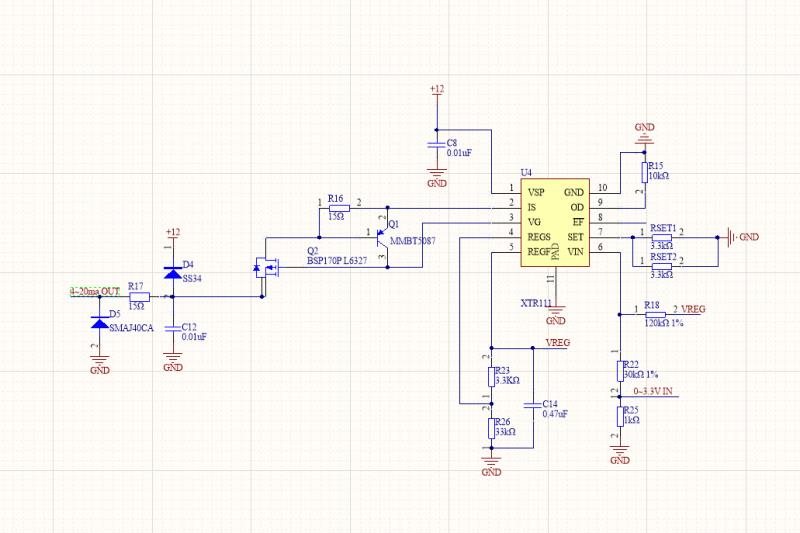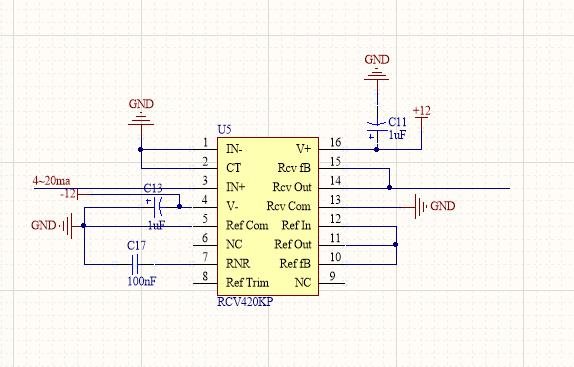I designed this circuit according to the instructions in the data sheet (1 pin in the circuit is not soldered to the board and has been left floating), but its output is a voltage of 1-6V instead of the 0-5V originally expected Voltage value. As for the input, I used the XTR11 chip design circuit to output a 4-20ma current, which is accurate after the oscilloscope test. I don't know where the problem lies. Please help me to see what the problem is, thank you very much!
-
Ask a related question
What is a related question?A related question is a question created from another question. When the related question is created, it will be automatically linked to the original question.









